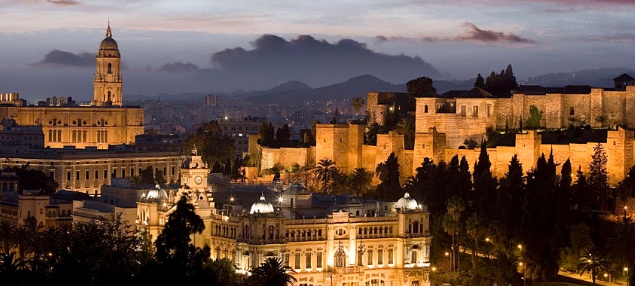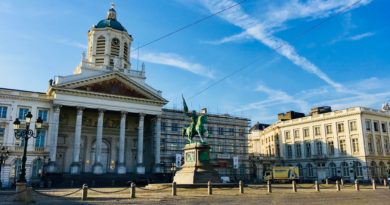Malaga, the Mediterranean Queen
You might have heard of Malaga. Of its beaches. Of its golf courses. Of its sunny days and endless blue skies. Of its climate, insultingly good for most Europeans.
What you may not know is that this city -founded by the Phoenicians nearly 3000 years ago- has become a cultural first-level world center. And it has certainly not been easy.
Surrounded by authentic marvels of the art and the history such as Cordoba, Granada and Seville – monumental and universal cities – Malaga has managed to gradually build its own account to become the cultural capital what it is today.
The winds of the Mediterranean Sea have brought to this beautiful valley of the south of the Iberian Peninsula to numerous peoples that, fascinated by the natural beauty of its surroundings, tried to settle in it. Phoenicians, Carthaginians, Romans and Arabs bequeathed a part of their culture and spirit to this city that still today can be found among the alleys and buildings of its historical center, such as the Roman fountain recently discovered in the basement of the Palacio Villalón or the remains of the Phoenician walls found in the Palacio Buenavista.
Perhaps one of the most astonishing aspects of Malaga is the large number of first-level museums that have chosen this city to open a permanent home, among them we can emphasize the State Russian Museum Saint Petersburg – the only branch in Europe of this museum is located in Malaga- the Museum Carmen Thyssen, the Centre Pompidou, the Picasso Museum and the Contemporary Art Center of Malaga.
The first stop of our museum route is the State Russian Museum Saint Petersburg in Malaga. Located in the ancient Tabacalera factory buildings, it is one of the few museums that is not placed in the historical center of the city. It was inaugurated just two years ago and constitutes a true enclave of the Russian culture in Spanish territory. It has an annual collection and several temporary collections. Until next February 5, one of the temporary exhibitions is dedicated to the fascinating Russian artist Marc Chagall. From that moment on, a retrospective exhibition of Vasili Kansdinski accompanied by a project dedicated to the czarist dynasty of the Romanovs will arrive.
Back to the center of the city, the Picasso Museum is a sight not to be missed. The legacy of Pablo Picasso is enormous and the imprint he has left in the city of his birth is indelible. The city is proud of who is probably his most universal son and surely Picasso would have loved to live in the Malaga of today. The Picasso Museum is located in the Palacio Buenavista, a renaissance building with Mudejar elements. There are 233 works in this collection covering a wide range of styles and techniques he mastered.
The next stop on our museum route is the Carmen Thyssen Museum. The space chosen for this collection that covers the different genres of nineteenth-century Spanish painting, from Goya to Picasso, is the palace of Villalón. Next to this building is the Calle Mártires, which houses some exquisite 18th century murals.
And the last of the cultural centers that I would like to highlight of this visit to Malaga is the Centre Pompidou, located in the modern building of El Cubo, at the confluence of the Paseo de la Farola and Paseo de los Curas and the recently renovated Muelle 1 and Muelle 2 of the Port of Malaga. Opened its doors in 2015 and the aim of this Center is to offer to people a tour through reference works of the collection of the Centre Pompidou, and accompany it with a program of exhibitions and multidisciplinary experiences, as well as exhibitions and workshops.
The picture of this impressive and avant-garde cultural gathering just a few meters away of the water of the port reminds me the deep connection between the sea and the modernity that in Malaga is so clearly visualized.
At the Pompidou Centre it is advisable to come taking a stroll through the numerous narrow streets and squares that covers the city center. The streets of downtown have a melancholy air. The heart of Malaga’s old quarter is the Plaza de la Constitución. One of the sidewall of the square leads to Calle Marqués de Larios, one of the most important shopping-streets of the city and a direct route to the Port. In this point of the city, one realizes that Malaga has something intangible: style and class.
Taking the narrow street of Santa Maria comes out into the vicinity of the Cathedral de la Encarnación and from there can easily be reached the Roman Theater and the Alcazaba (citadel).
The gastronomy: cult and culture
The gastronomy of Malaga deserves a special remark. The city has more than 1,000 restaurants, which gives us an idea of the importance that the gastronomy has for their people. In Malaga, gastronomy and art go hand in hand. Legumes, fish, vegetables, meats and fruits are the basis of the cuisine of Malaga, where olive oil –which has reached a very high level of quality in this land-, acts as the natural link between all these elements. Restaurants such as El Palmeral, El Trillo, El Pimpi or Los Patios de Beatas combine tradition and sophistication, and offer a selection of local wines that will make your lunch or your dinner an unforgettable experience.
Getting to Malaga from Brussels is just a breeze. Brussels Airlines and Ryanair take you to this lovely Mediterranean city in less than 3 hours on a daily basis.






